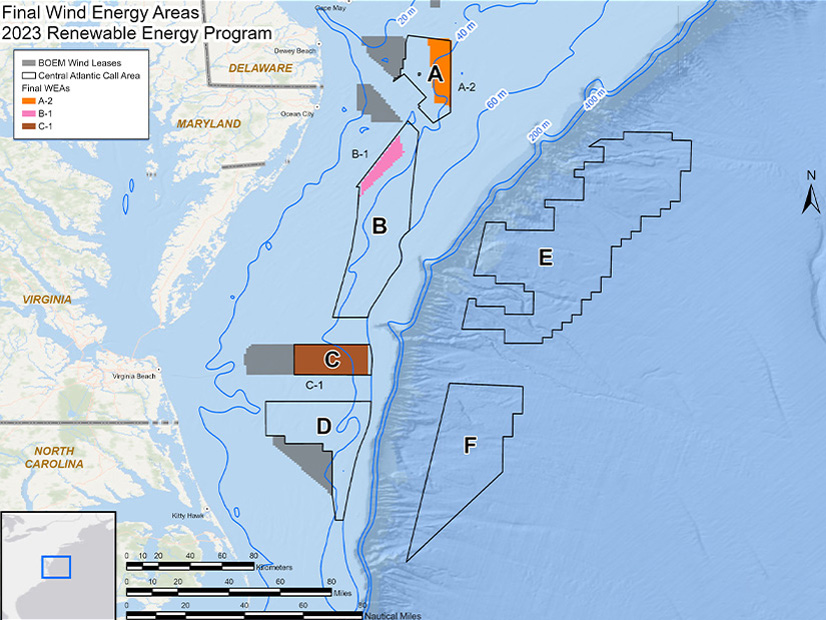Delaware’s environmental agency has proposed an offshore wind procurement strategy for one of the few East Coast states without a stated goal for developing wind energy from the ocean.
The Department of Natural Resources and Environmental Control (DNREC) State Energy Office announced Jan. 3 that it had delivered the report to the governor and legislators.
It lays out the many moving pieces in an industry that holds great promise for producing clean energy but is experiencing severe growing pains in the United States.
Delaware, which has the shortest ocean coastline of any state with coastline except New Hampshire, currently has no plans for offshore wind procurement. The official state webpage for offshore wind leads off with a noncommittal summary: “Delaware continues to explore opportunities and challenges presented by the growing offshore wind industry.”
But the state has set a target for 40% renewable energy by 2035. And its Renewable Energy and Clean Technologies Workgroup recently recommended the state develop a procurement mechanism for at least 800 MW of offshore wind capacity.
This compares with goals of 8.5 GW in Maryland and 11 GW in New Jersey.
The strategy proposed by DNREC analyzes the cost, benefits and impact of a hypothetical 800-MW wind farm on the Outer Continental Shelf.
The report flags an inherent challenge: There are few options other than offshore wind for delivering renewable energy in the quantities needed by Delaware, but offshore wind is an industry where economy of scale is especially important, and it is hard for such a small state to achieve economy of scale on its own.
The strategy recommends looking at partnerships with neighboring states to achieve that economy.
It also reviews the uncertain and changing factors affecting the U.S. offshore wind industry, predicts developments in 2024 that will affect planning and offers recommendations on structuring a procurement.
The U.S. Bureau of Ocean Energy Management has designated wind energy areas in the vicinity of Delaware, but projects proposed to date would feed into Maryland. Delaware’s only role would be as a landing site for export cables.
Nearby, Ørsted has canceled both phases of a proposed wind farm that would feed into New Jersey. Ørsted has not canceled the proposed Skipjack Wind — a Maryland project off the Delaware coast — but it has scaled investments back to a minimum.
The report was produced by DNREC’s Division of Climate, Coastal and Energy with Synapse Energy Economics and Zooid Energy.
“This report provides the background, current economic conditions and options for the governor and state legislators to consider as Delaware charts its path forward in the development of a comprehensive offshore wind program,” DNREC Secretary Shawn M. Garvin said in announcing the proposed strategy.



